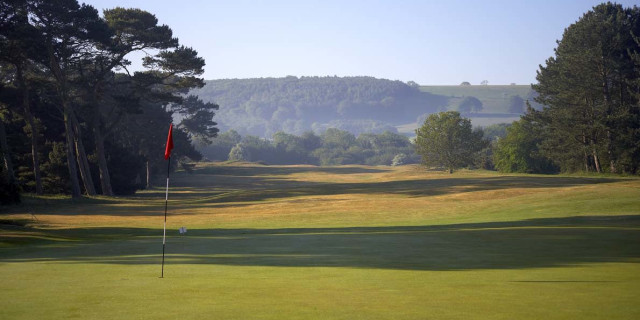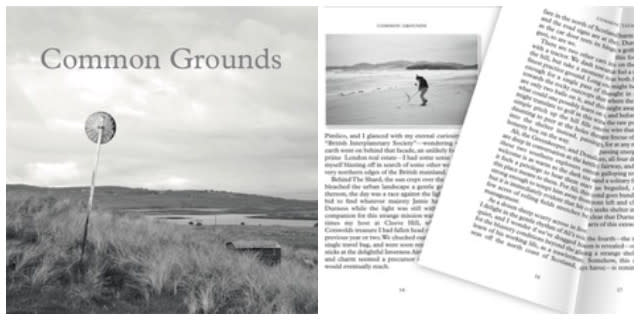
Is Your Golf Course in The Wrong Place
Guest Article by Alasdair Rae, Head of Data at Custodian Golf, Custodian Golf
Back in 1990, just one year after the publication of the R&A’s The Demand for Golf, I got a job at the first driving range to open in the Highlands of Scotland, on the outskirts of Inverness. At the time, the R&A predicted that 691 new 18-hole courses would be needed by 2000 to meet growing demand, and this new range was part of that wave.
The 1980s golf boom, inspired by the successes of Lyle, Woosnam and Faldo, had created an era of seemingly unstoppable growth. New facilities were springing up, and waiting lists for club membership were the norm. But things didn’t quite turn out that way, at least not for everyone.
Fast forward 35 years, and that same driving range is now surrounded by housing, well connected by new infrastructure, and no longer on the city’s fringe. Inverness has grown and become more affluent, yet the golf course has been reduced to a 9-hole layout. In a region that attracts global golf tourism, it struggles to compete. This isn’t just a one-off. Stories like this are repeated across the country.
What’s Going On?
A venue that once seemed ideally located and perfectly timed finds itself fighting to stay afloat. The details vary, but the underlying forces are familiar. Geography, economy, climate, and demographics have all undergone significant shifts. And while some clubs may appear to suffer from mismanagement or poor decisions, we believe many are simply contending with forces beyond their control, shifting sands that demand a broader perspective.
The Big Picture - Context is Everything

There are around 2,600 golf courses across Great Britain. For each one, there’s data: population catchment, weather patterns, local competition. However, to truly understand what’s happening, we need to take a step back.
The UK’s population has grown from 57 million in 1990 to around 68 million in 2025. However, it's not just about size; the composition, wealth, location, and lifestyle of the population have all changed. The 1980s boom made sense at the time. As baby boomers moved up the population pyramid, grew wealthier and suburbanised, many had both the means and the time to play more golf.
However, they weren’t replaced in traditional clubs at a sufficiently high rate. Before the COVID-19 pandemic, many courses were already in a perilous financial position. The pandemic may have offered temporary relief, but it did not reverse the long-term decline in the economy. Without decisive action, many clubs will face increasing pressure, and the game as a whole may suffer.
It’s well known that the typical golf club member does not reflect broader society. Approximately 85% of members are male, and nearly two-thirds are over 50 years old. That’s a serious challenge for the future. The problem isn’t coming - it’s already here. And while there are plenty of high-level discussions and policy documents, there’s been little in the way of meaningful action. As the saying goes, the best time to plant a tree was 20 years ago. The second-best time is now.
At Custodian Golf, we care deeply about the long-term sustainability of the game. We hope that by shining a light on these issues, more clubs and governing bodies will take proactive steps to secure golf’s future.
How Location & Population Shape Club Success
As the UK’s population has shifted, so too has the viability of some clubs. Geodemographic changes have left once-thriving seaside towns with strong golf legacies in economic decline, while other areas have seen booming growth. This has a direct impact on club sustainability, before even considering critical challenges like climate change and water scarcity.
Meanwhile, social and cultural norms have undergone significant evolution. Technology has introduced new forms of leisure, and the competition for people’s time and money is fiercer than ever. Pay-and-play courses, Trackman-equipped ranges and tech-driven golf experiences are gaining popularity, especially among younger, more diverse players. Yet, a stark disconnect remains between this modern version of the game and traditional golf club membership.
That’s a gap that urgently needs to be bridged.
Geography Matters - But History Does Too
We often ask whether a golf club is in the wrong place. But here’s a harder question: Is it the wrong time?
Some clubs are held back not by location, but by legacy. They may lack a junior section, operate with outdated rules, or fail to represent a range of ages and perspectives in decision-making. Something as small as a strict dress code, or as large as an ageing, shrinking membership, can become a barrier to future growth.
Relocation doesn’t always mean a new postcode; it can also mean moving from the past to the present. That might be as simple as shifting strategic focus to long-term planning rather than short-term traditions.
A handful of UK clubs, those with seven-figure visitor revenue or exclusive UHNW access, may not need to worry. But for the remaining 2,500-plus venues, these issues are not only relevant, they’re existential.
Ask yourself: Is your club in the wrong place, or just stuck in the past? Either way, the next step is clear. Clubs can’t change their location easily. But they can change how they think, plan and operate.
What Can Be Done?
At Custodian Golf, we’re focused on solutions. We frame the response to these challenges around three strategic options:
- Reposition - Understand your club’s brand, audience and market position. Then build a delivery plan that moves your club towards a more resilient, future-ready model.
- Repurpose - Make better use of existing land and assets. This could involve course redesigns, facility upgrades, or rethinking the club’s broader offer.
- Relocate - In rare cases, moving entirely might be the best option. One of our team led the successful relocation of Royal Norwich Golf Club, and we are currently supporting other clubs considering similar steps.
We know none of these are quick or easy. But doing nothing, the default option for too many, is the riskiest move of all.
This isn’t just a challenge for struggling local clubs. Even elite venues need to model the risks posed by global instability, golf tourism volatility, or fluctuations in resource prices. For clubs with tighter margins, the impact of something as routine as a 20% increase in energy costs or a 50% jump in the price of sand can be devastating.
As Jim Arthur, the legendary agronomist, once said, "In periods of enormous change, it ill behoves anyone to stick rigidly to the precepts which governed previous decades."
We believe that protecting the future of golf means understanding its past and being brave enough to act. If your club is ready to start a conversation about what comes next, we’d very much like to hear from you.
Related Content
What Golf Clubs Have to Learn to Survive
Sustainability in Golf: Balancing Environmental & Financial Futures
Tags: GOLFERS Golf Clubs Golf Club Membership Golf daily picks Custodian Golf









